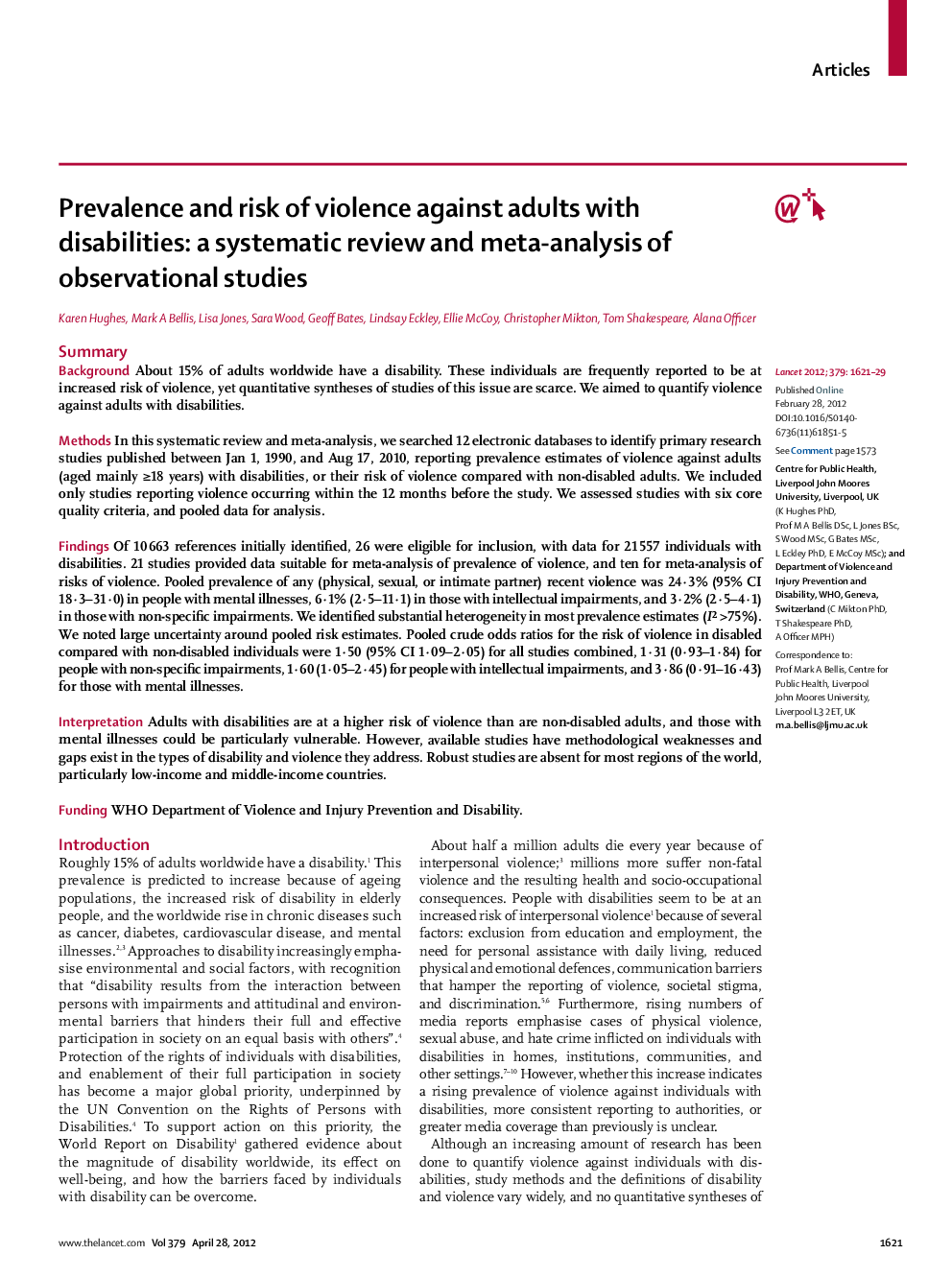| Article ID | Journal | Published Year | Pages | File Type |
|---|---|---|---|---|
| 3492579 | The Lancet | 2012 | 9 Pages |
SummaryBackgroundAbout 15% of adults worldwide have a disability. These individuals are frequently reported to be at increased risk of violence, yet quantitative syntheses of studies of this issue are scarce. We aimed to quantify violence against adults with disabilities.MethodsIn this systematic review and meta-analysis, we searched 12 electronic databases to identify primary research studies published between Jan 1, 1990, and Aug 17, 2010, reporting prevalence estimates of violence against adults (aged mainly ≥18 years) with disabilities, or their risk of violence compared with non-disabled adults. We included only studies reporting violence occurring within the 12 months before the study. We assessed studies with six core quality criteria, and pooled data for analysis.FindingsOf 10 663 references initially identified, 26 were eligible for inclusion, with data for 21 557 individuals with disabilities. 21 studies provided data suitable for meta-analysis of prevalence of violence, and ten for meta-analysis of risks of violence. Pooled prevalence of any (physical, sexual, or intimate partner) recent violence was 24·3% (95% CI 18·3–31·0) in people with mental illnesses, 6·1% (2·5–11·1) in those with intellectual impairments, and 3·2% (2·5–4·1) in those with non-specific impairments. We identified substantial heterogeneity in most prevalence estimates (I2 >75%). We noted large uncertainty around pooled risk estimates. Pooled crude odds ratios for the risk of violence in disabled compared with non-disabled individuals were 1·50 (95% CI 1·09–2·05) for all studies combined, 1·31 (0·93–1·84) for people with non-specific impairments, 1·60 (1·05–2·45) for people with intellectual impairments, and 3·86 (0·91–16·43) for those with mental illnesses.InterpretationAdults with disabilities are at a higher risk of violence than are non-disabled adults, and those with mental illnesses could be particularly vulnerable. However, available studies have methodological weaknesses and gaps exist in the types of disability and violence they address. Robust studies are absent for most regions of the world, particularly low-income and middle-income countries.FundingWHO Department of Violence and Injury Prevention and Disability.
